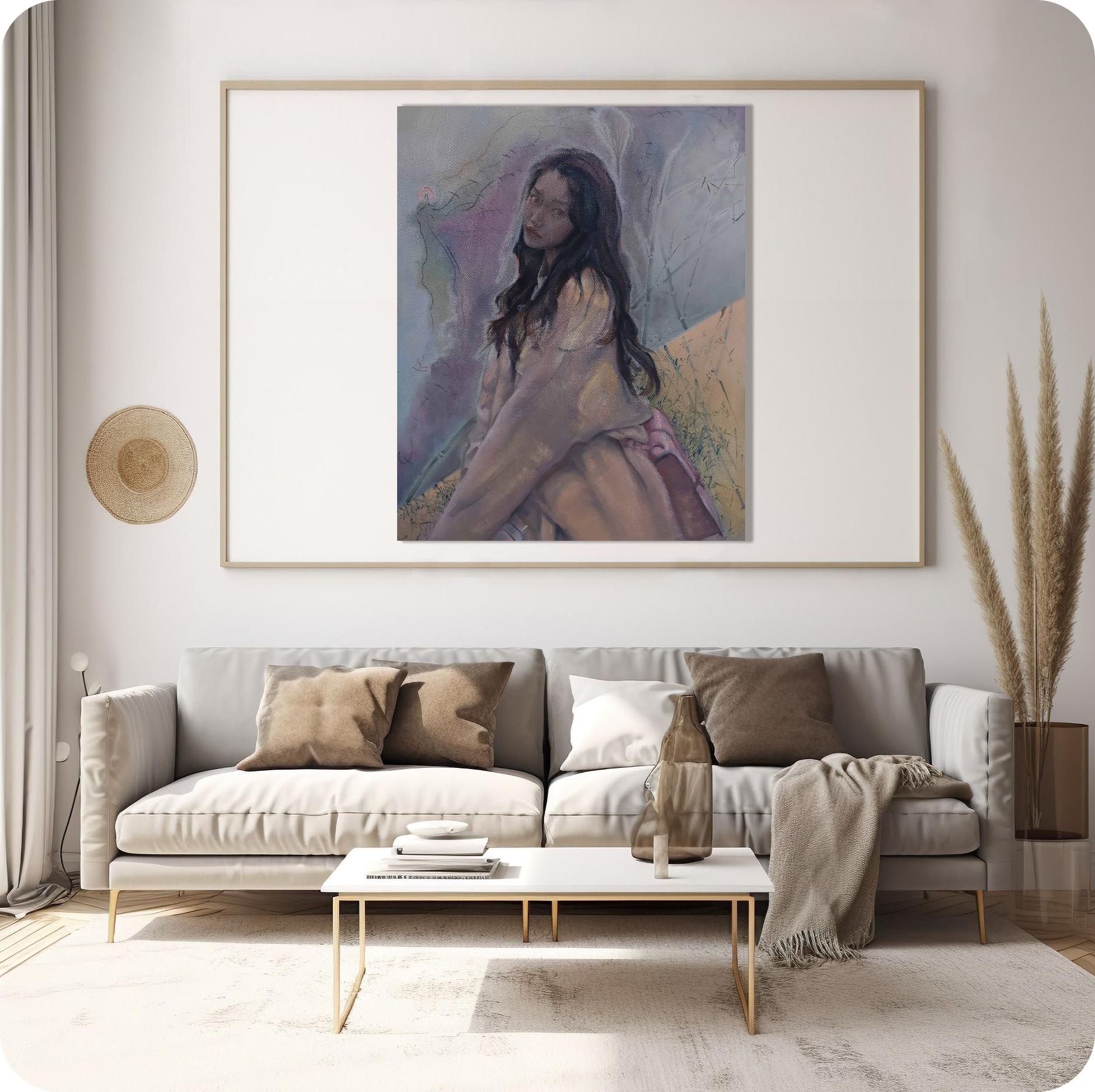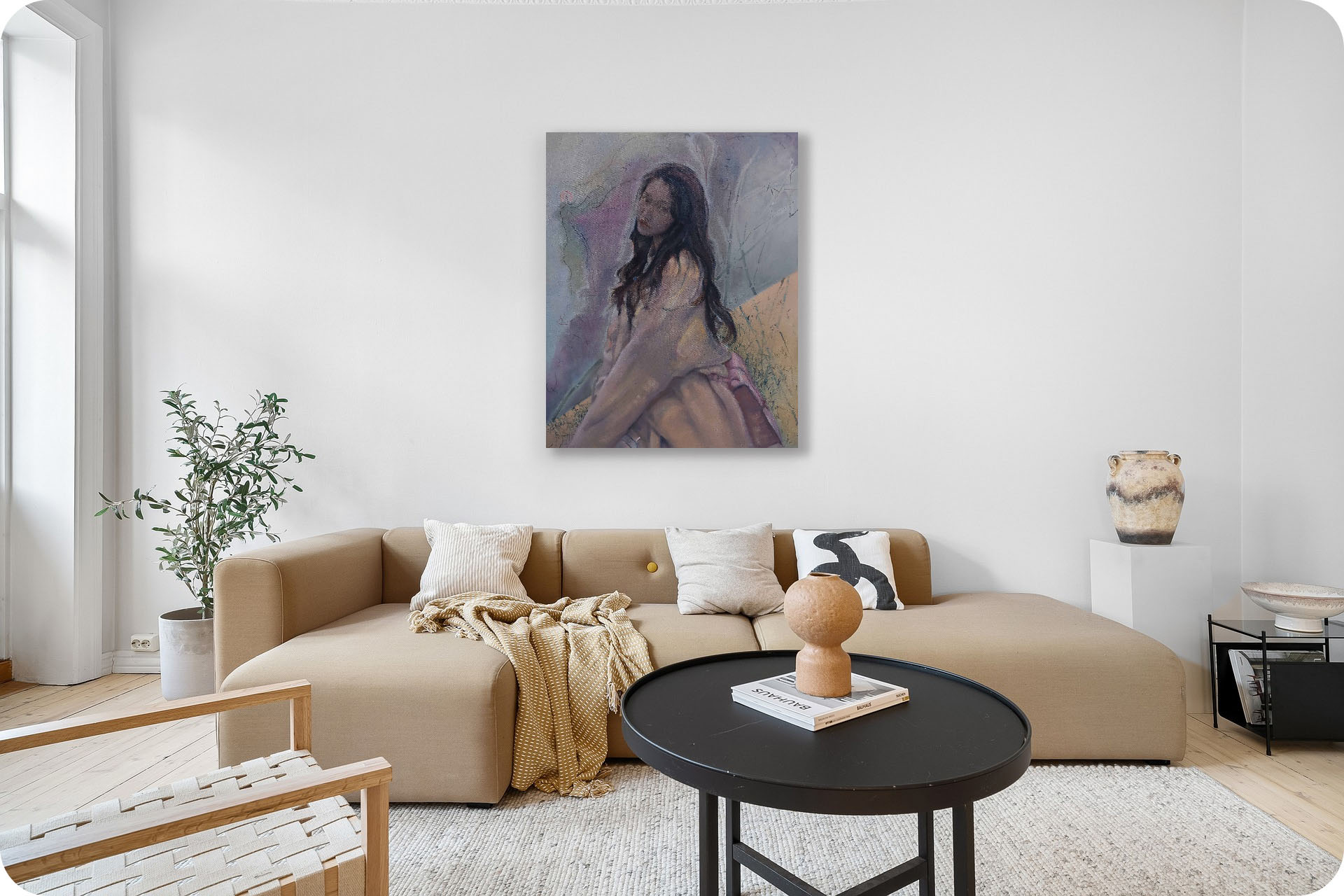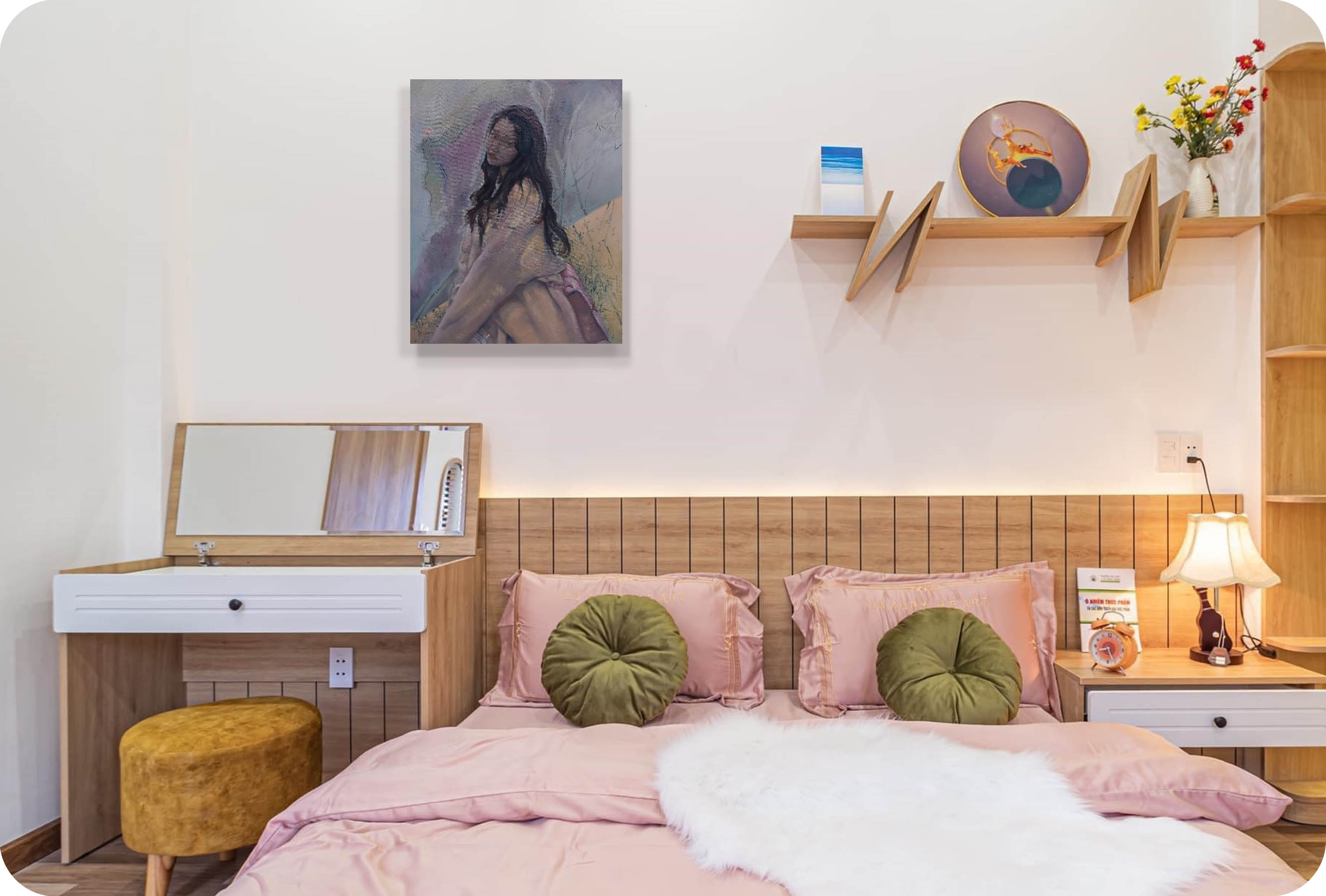This painting was created in 2019. This year is the third year of college. I started to prepare for my graduation work, so I tried paintings with more concepts, depth and formal unity. In these paintings, you Being able to begin to see a more specific me. Such attempts did add weight to the work, but it was only a small step compared to the depth that would later come with the weight of life. Then came the COVID-19 epidemic at the end of the year, and the future that people expected changed its face, either urgently or slowly.
In this year's paintings, I began to store small pieces of trees inside, as if this year I am particularly concerned about nature and "Man and nature". This tree is my simplification of "nature" and myself.
Inches: 27.5 x 35.4 in
Size without the frame: 70 cm x 90 cm
Country: China
Date: 2019
Materials: Oil paint on linen
Condition: well preserved
Creative themes and style | My works revolve around the creative concept of "The land of humanity, People on the land". The people in the painting are people in nature, and the lines, shapes, and colors are close to nature. The nature in the painting is nature in the eyes of humans, existing in interaction with humans.I don’t pursue a series of works with a fixed and continuous style. I hope that the style of the pictures will synchronize with the changes in my life and always remain oscillating. The performance of the work must be in sync with the development of one's own life in order to be Sincere and powerful. Ideas are later.
An Interview with Artist Philo by Artphiloso Gallery
If you would like to collect this artwork or know more about the artist, please contact us.



Composition: The lines and color blocks of the figure and background merge, dissolving clear boundaries. This resembles the interweaving of reality and fantasy in Marc Chagall's paintings, creating a surreal atmosphere. The figure seems to organically emerge from the hazy scenery, using a concise layout to expand the viewer's imagination of space and existence.
Color Application: Colors are subtle and richly layered. Soft, interwoven tones like pinkish-purple and pale brown construct a warm yet slightly nostalgic ambiance, comparable to the rendering of time and emotion through color in Claude Monet's late-period Water Lilies series. Employing color gradients to convey the passage of time, the visual presentation of "faded hues" metaphorically blends memory and reality, making color a vessel for emotion and temporality.
Brushwork Technique: The brushwork is loose, spirited, and rhythmic. The layering and blending of strokes soften contours, adding a hazy textural quality. Similar to the natural spontaneity of Fu Baoshi’s "scattered brush" (san feng) technique, seemingly casual strokes precisely capture the figure’s expression and the environment’s essence. Within this flowing brushwork, figure and background achieve harmonious coexistence, imbuing the picture with a dynamic sense of breath.
Content and Theme: The focus is on "faded hues." Employing the fading of colors and the blurring of forms, it explores the state of individual existence within the torrent of time. It subtly resonates with Pan Yuliang’s exploration of the relationship between self and environment, yet uses more understated visual symbols to excavate fragments of inner memory. It’s a poetic presentation of the individual’s spiritual world under the erosion of time, articulating contemporary reflections on time and authenticity.
Emotional Expression: Emotion is delicate yet profound. The figure’s backward glance and the background’s hazy lines convey nostalgia for the past and contemplation of the present. Soft tones act like a memory filter, suffusing the scene with wistfulness and melancholy. Within this ambiguous atmosphere, it narrates the tenderness and resignation inherent in the individual’s gentle struggle with time. In the context of contemporary painting, Faded Hues uniquely interrogates time and existence, continuing art’s eternal gaze upon humanity and life’s trajectory. Resonating like a faded old photograph, it mirrors the shared sentiments of time held by both creator and viewer.
A1: The artist weaves together soft tones of gray-violet, beige, and cool blue, causing the figure’s edges to blend partially into the background. This treatment makes the image feel like a memory that is gradually dissolving—existing and vanishing at the same time—creating a psychological sense of drift.
A2: Her slightly tilted seated pose, paired with a gaze that is both reserved and distant, suggests a duality: she appears to look toward the viewer, yet remains absorbed in her own thoughts. Instead of projecting direct power, the figure embodies a fragile, wavering temperament that echoes the theme of fading presence.
A3: The sketch-like branches lack solid texture but act as environmental cues. They resemble traces of memory or outlines of a dream, so the composition does not rely on concrete spatial depth yet evokes an atmosphere of time passing and transition.
A4: Fading emphasizes gradual transition, dissolution, and blurring. Unlike companion works that rely on bold symbolic contrasts, this piece conveys a sense of memory, nostalgia, and uncertainty of self-image within time. It leans less on direct confrontation and more on subtle psychological ambiguity, which sets it apart within the series.
A5: Its uniqueness lies in its indeterminacy—rather than asserting clarity or presence like traditional portraiture, it evokes a landscape of loss and suspension. This expressive approach is highly resonant in contemporary painting, making it suitable for exhibitions exploring memory, disappearance, and feminine interiority. At the same time, its emotional atmosphere grants it strong appeal as a private collection piece, especially within collections focusing on introspective, mood-driven works.
A: Click here to view ARTPHILOSO's Guide for Collectors.
